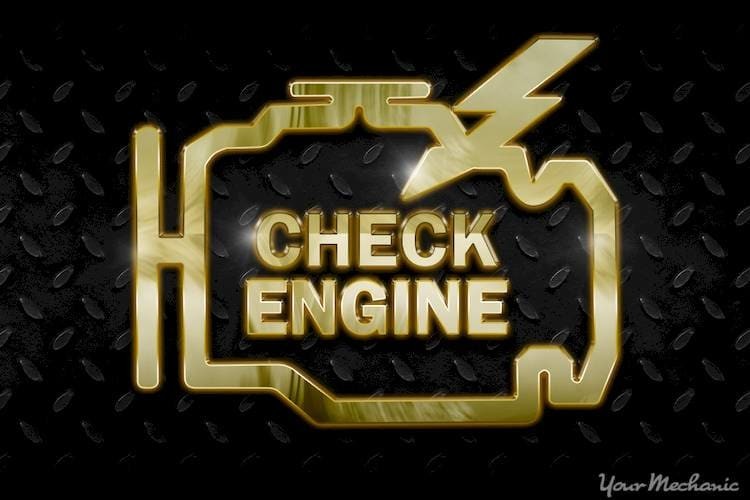The P2402 diagnostic trouble code (DTC) is a common issue encountered in modern vehicles. This code indicates a problem with the evaporative emission control system (EVAP), specifically a fault in the leak detection pump control circuit. Understanding this code is crucial for effective diagnosis and repair.
 alt text of a car's dashboard with the check engine light illuminated
alt text of a car's dashboard with the check engine light illuminated
What Does the P2402 Code Mean?
The OBDII/EOBD error code P2402 signifies that the Engine Control Module (ECM) has detected a high voltage signal in the control circuit of the EVAP system’s leak detection pump. This typically points to an electrical malfunction within the pump circuit.
Causes of the P2402 Code
Several factors can trigger the P2402 code:
- Faulty EVAP Leak Detection Pump: The pump itself may be defective, drawing excessive current or experiencing internal short circuits. This is a common cause.
- Wiring Issues: Damaged, corroded, or shorted wiring within the pump’s control circuit can disrupt the voltage signal and trigger the code.
- High Resistance: Increased resistance in the power or ground circuits can lead to a voltage drop, causing the ECM to detect a high voltage signal. This can stem from poor connections or damaged wiring.
- Faulty EVAP System Relay: A malfunctioning relay can interrupt power supply to the pump, causing the P2402 code.
Symptoms of a P2402 Code
While the P2402 code might not always result in noticeable drivability issues, common symptoms include:
- Illuminated Check Engine Light: The most obvious sign is the activation of the check engine light on your dashboard.
- Failed Emissions Test: A vehicle with a P2402 code will likely fail an emissions test due to the EVAP system malfunction.
- Blown Fuse: In some cases, a short circuit in the pump circuit can blow a fuse, disabling the EVAP system entirely.
Diagnosing the P2402 Code
Diagnosing the P2402 code requires a systematic approach:
- Retrieve Diagnostic Trouble Codes (DTCs): Use an OBD-II scanner to read the stored codes and freeze frame data. This data provides valuable insights into the conditions when the fault occurred.
- Inspect Wiring and Connectors: Thoroughly examine the wiring harness and connectors associated with the EVAP leak detection pump for damage, corrosion, or loose connections.
- Test Pump Resistance: Measure the resistance of the pump motor using a multimeter. Compare the readings to the manufacturer’s specifications to determine if the pump is faulty.
- Check for Shorts: Test the wiring for shorts between the power supply and the pump using a multimeter.
Common Diagnostic Mistakes
Avoid these common errors when diagnosing the P2402 code:
- Clearing Codes Prematurely: Clearing the codes before thoroughly inspecting the freeze frame data can lead to misdiagnosis.
- Neglecting Fuse Replacement: If a blown fuse is the cause, replace it with the correct amperage rating after addressing the underlying issue.
- Overlooking Wiring Issues: Failing to inspect the wiring harness thoroughly can result in overlooking a simple but crucial problem.
Repairing the P2402 Code
Depending on the diagnosis, the following repairs may be necessary:
- Replace the EVAP Leak Detection Pump: If the pump is faulty, replacement is usually the solution.
- Repair or Replace Wiring: Damaged or corroded wiring needs to be repaired or replaced to restore proper circuit function.
- Replace the EVAP System Relay: A faulty relay should be replaced to ensure proper power supply to the pump.
Conclusion
The P2402 code indicates a problem with your vehicle’s EVAP system, specifically the leak detection pump. Addressing this issue promptly is essential to pass emissions tests and maintain the proper functioning of your vehicle’s emission control system. While some repairs can be performed by experienced DIYers, seeking professional help is recommended for accurate diagnosis and effective repair.
